Because specimens have stories.
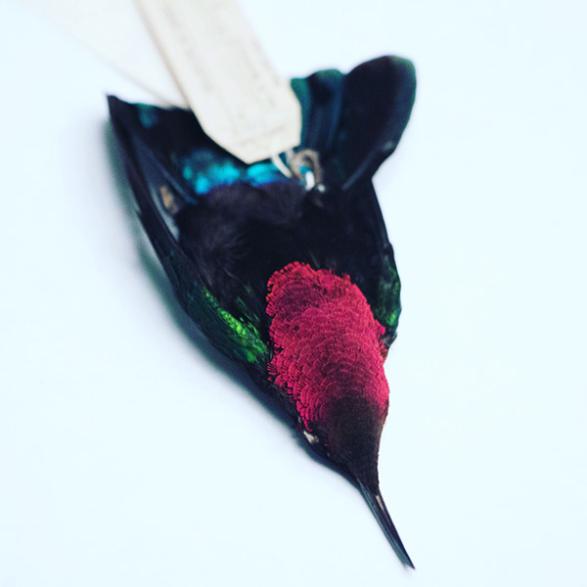

MLZ:Bird:1107 | Purple-throated Carib
Eulampis jugularis
Collected in 1888 in the Dominican Republic, this specimen is one of our oldest. Robert T. Moore took great pains to obtain at least one specimen of every hummingbird species, which is why our hummingbird collection is one of the best in the world. This species, widespread in the Caribbean, is featured on the cover of later editions of the Birds of the West Indies, authored by ornithologist James Bond—not to be confused with the literary spy of the same name. That they shared a name was no coincidence. The 007 author Ian Fleming spied on Purple-throated Caribs at his estate in Jamaica and in doing so lifted the name for his spy from the cover of the field guide!
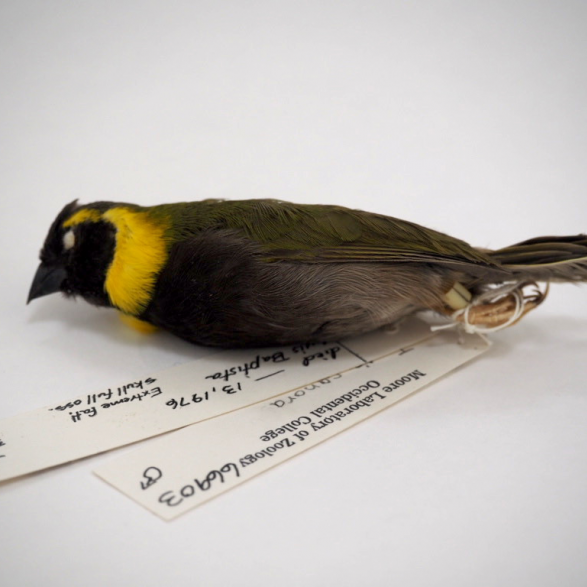
MLZ:Bird:66903 | Cuban Grassquit
Phonipara canora
On display in our lobby’s exhibit on tanagers, this Cuban Grassquit was collected in 1976 and the study skin was prepared by former Moore Lab director Luis Baptista. As noted on the specimen tag, this bird had “Extreme fat!” and Baptista described the reproductive organs as “TE!”. Endemic to Cuba, this species is regarded as one of the most attractive among members of the genus Tiaris notably for the striking contrast between their black mask and breast-patch and their canary yellow collar.
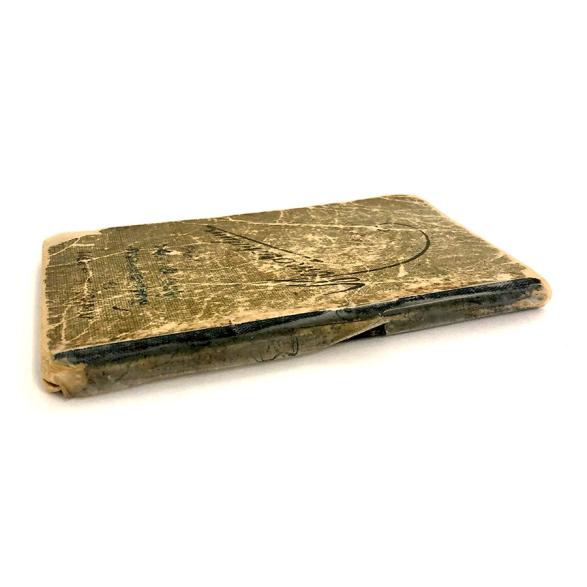
Personal Journal, Chester C. Lamb, 1941-1946
The Moore Lab’s primary collector took field notes recording each place he visited in Mexico, the birds he collected there, and descriptions of the habitat. These field notes provide valuable metadata that help researchers locate his exact collecting sites and understand environmental change through time. He likely wrote these field notes knowing they were for his employer and the collection, so in parallel, Lamb also kept a personal journal of his activities, generously donated to the Moore Lab by his children. These journals also record his travels and activities, but also mention his family and others he traveled with.
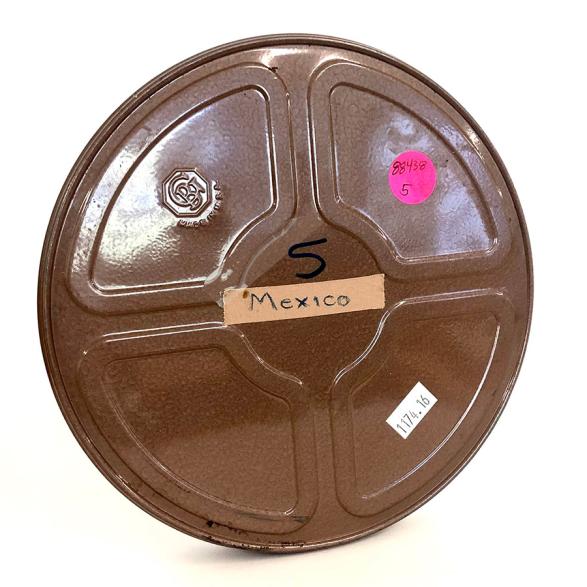
Wildlife Film, Robert T. Moore, 1930s
Robert T. Moore was interested in wildlife photography and film almost as soon as these media became widely available. The Moore Lab archives contain lantern slides, photochrome lumiere, as well as several rolls of film from the 1920s and 1930s, documenting Moore’s bird encounters.
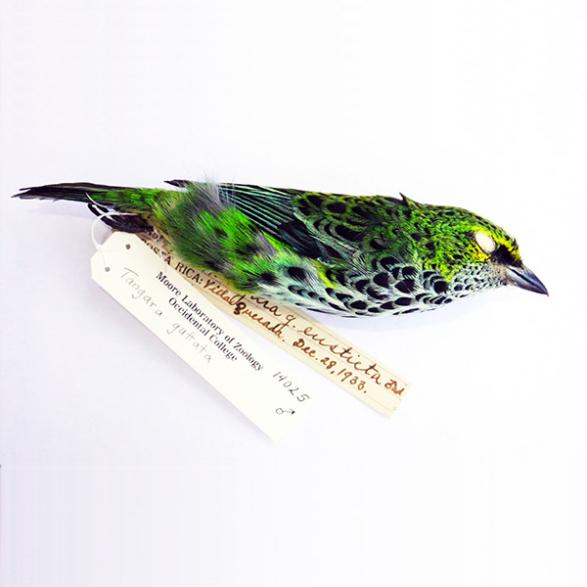
MLZ:Bird:14025 | Speckled Tanager
Tangara guttata
Collected December 28, 1933 in Costa Rica. The Moore Lab holds an impressive collection of the colorful tanagers (Thraupidae family), many collected in Costa Rica by the enigmatic collector Austin Paul Smith. Virtually nothing has been known about Smith until some recent historical investigations, which uncovered that he died a pauper in 1948 in a mental institution, having suffered from a niacin deficiency that causes dementia.
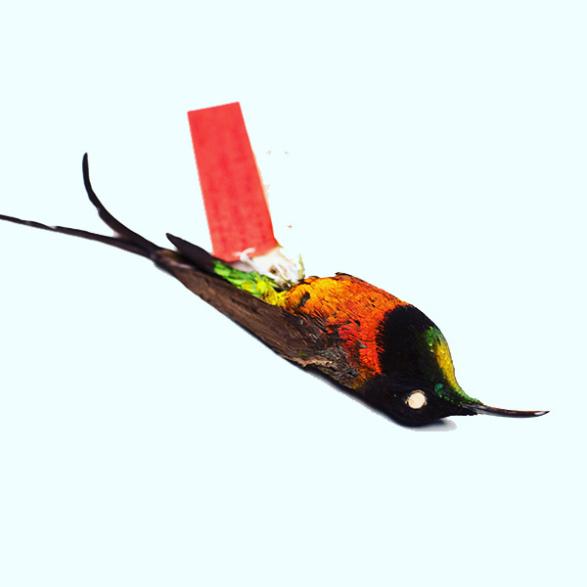
MLZ:Bird:10339 | Fiery Topaz
Topaza pyra
This specimen was collected by Carlos Ollala in eastern Ecuador near the Rio Napo on May 22, 1933. Much later, in 2000, it was described as the holotype specimen of the amauruni subspecies of Fiery Topaz, demonstrating how new biodiversity is often already collected and in museums awaiting description. Carlos Olala was the patriarch of a family of specimen collectors who began working for Frank Chapman of the American Museum of Natural History in 1922. They collected under the title “Ollala Family” or “Ollala Brothers” for years, eventually traveling all over South America.
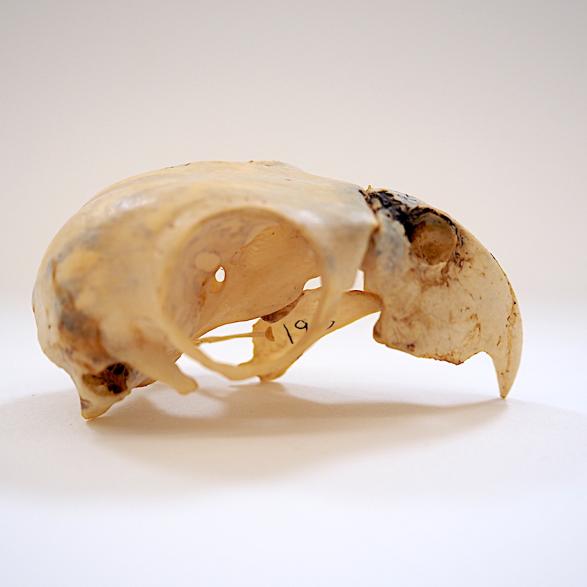
MLZ:Bird:67469 | Lilac-crowned Parrot
Amazona finschi
This skeleton specimen was collected by one of Moore Lab’s prolific collectors, Chester C. Lamb, from El Molino, Sinaloa, Mexico on March 8, 1934. Lilac-crowned Parrots are endemic to the Pacific coast of Mexico and are mostly found in wooded foothills. These parrots have now established themselves in Southern California through the pet trade and are thriving in the city alongside their sister species, Red-crowned Parrots, which are endemic to Mexico’s eastern coast. Lilac-crowned and Red-crowned Parrots are not known to cross paths in their native ranges, but in Los Angeles they are both hybridizing and mingling.
Nuttall's Ornithology by Montague Chamberlain, Second ed., 1896, Boston: Little Brown and Company
A Christmas gift to Robert T. Moore from his mother when he was fourteen years old, Nuttall's Ornithology was one of the first portable bird books and placed emphasis on bird behavior.

